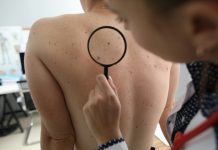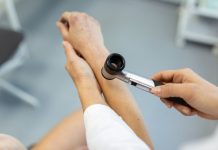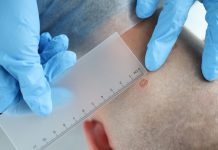
As the weather becomes warmer, you may increase your outdoor activity.
This is good for health if you protect your skin carefully.
According to the American Academy of Dermatology (AAD), skin cancer is the most common cancer in the U.S.
The cancer rates have increased dramatically in recent years and continue to rise.
Megan Rogge, MD, assistant professor of dermatology at McGovern Medical School at UTHealth, debunks 10 big myths about skin cancer.
Myth: Skin cancer won’t kill lives.
Fact: Every day nearly 20 Americans die from melanoma, a deadly type of skin cancer, according to the AAD.
This cancer can invade the entire body, and it can be caused by tanning bed use and sun exposure.
Research indicates that regular sunscreen use can help reduce melanoma risk.
Myth: Darker skins don’t need protection.
Fact: It is true that fair skin tends to burn more easily, but everyone needs to take precautions.
There’s no such thing as a healthy tan. Lighter skin tones are more susceptible to sun damage, but all skin types can be affected and will benefit from wearing sun protection.
Myth: A high-factor sunscreen can protect people all day long.
Fact: A high Sun Protection Factor (SPF) doesn’t mean people are free to bask in the sun for longer.
The SPF of a sunscreen indicates the percentage of UVB rays blocked. An SPF of 15 only blocks 9% of UVB rays, whereas an SPF of 30 blocks 97%.
The researcher recommends using a broad spectrum sunscreen with an SPF of at least 30.
But no matter how high the SPF, it only lasts two hours so regular reapplication is essential.
For people who may be sweating or plan on swimming, it is important to get a sunscreen labeled ‘very water resistant’.
Myth: I’ll be fine if I cover up.
Fact: A typical white cotton T-shirt has an SPF equivalent of only 4, so it’s not going to prevent much sun damage at all.
For people who rely on fabric for sun protection, they need to buy clothing with an Ultraviolet Protection Factor (UPF).
And don’t forget that only the parts covered are protected, so wearing some sunscreen will still be necessary.
Myth: Sunscreen causes cancer.
Fact: There are no studies linking sunscreen to the development of cancer.
This speculation grew from evidence showing certain ingredients found in some chemical sunscreens may mimic hormones if used in very high amounts.
But the findings do not necessarily apply to humans.
Myth: I need to get sunshine for vitamin D.
Fact: Ensuring your body has sufficient vitamin D is important for children and adults.
Although exposure to sunlight is a significant source, there are alternatives.
Some foods are fortified with vitamin D. Supplements are also available to use.
If it is hard to obtain the recommended daily amount solely through diet and supplements, 10 minutes of unprotected sun exposure to the face and upper body daily during peak hours of 10 a.m. to 2 p.m. may be helpful.
But this is not good for people who have a strong personal or family history of skin cancer.
Myth: I only need to wear sunscreen if it’s hot and sunny.
Fact: People also need to use sunscreen in rainy and cloudy days. Clouds filter out sunlight, but not the harmful UV rays which cause skin cancer and premature aging.
In addition, UV rays are independent of temperature, so you can get just as much sun damage on a cold, sunny day as a hot summer one.
Myth: My makeup contains sunscreen, so I don’t need sunscreen.
Fact: Foundation with a high SPF may sound like the perfect solution, but there are potential pitfalls.
Firstly, it’s not necessarily applied all over the face and neck.
Second, powder-based products are likely to be least effective because there is less coverage of the skin, and powder does not adhere to the skin surface as well as a cream or lotion.
Myth: My skin looks healthier with a tan.
Fact: A sun-kissed glow might sound desirable, but its appeal can be deceiving and short-lived.
For example, a golden tan can be a sign your skin is trying to defend itself from harmful UV radiation.
Any tanning method that involves UV radiation exposure to the skin causes damage, which will increase the risk of skin cancer and accelerate aging.
Myth: I would know if something was seriously wrong with my skin.
Fact: Small changes to skin signaling a major problem can be easily missed, so it’s important to see a doctor.
The researcher suggests that the most common skin cancer – basal cell carcinoma – appears as a pink bump.
If detected early and treated properly, it’s highly curable. People should get a yearly skin check to detect any abnormalities and address them.
Copyright © 2019 Knowridge Science Report. All rights reserved.



